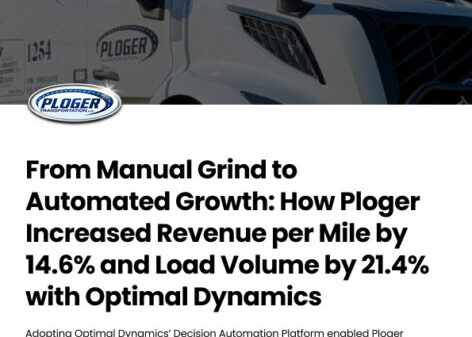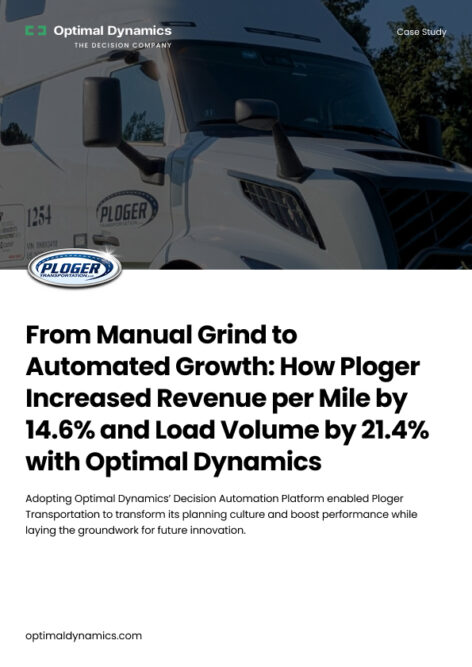Ploger Transportation has achieved significant improvements in its operational efficiency, reporting a remarkable increase in weekly revenue per mile by 14.6% and load volume by 21.4%. This transformation was made possible through the integration of Optimal Dynamics’ Decision Automation Platform, which allowed the company to move away from traditional manual processes to a more streamlined, data-driven approach.
Faced with rising costs and a competitive freight market, Ploger Transportation sought a smarter method for planning its freight network. By adopting the automation platform, the company replaced its reliance on spreadsheets and manual dispatching, paving the way for continuous optimization of its operations. This shift not only enhanced financial performance but also contributed to improved satisfaction among drivers and customers.
The adoption of the platform was accompanied by a series of change-management initiatives aimed at fostering trust among planners. By demonstrating the efficiency and reliability of automated recommendations, Ploger Transportation successfully encouraged its team to embrace this new approach. The combination of technology and a supportive change-management strategy enabled the company to make more consistent and profitable decisions.
According to the company’s internal data, the results of this transition have been tangible. The notable increase in weekly revenue per mile and load volume signifies not just financial growth but also a solid foundation for long-term innovation within the organization.
For further insights into how Ploger Transportation automated its dispatching processes and improved spot-freight sourcing, a comprehensive case study is available for download. The case study outlines the specific strategies employed and provides quantifiable results, showcasing the significant impact of implementing a decision automation platform in the freight industry.
With ongoing developments in the logistics sector, Ploger Transportation’s proactive approach highlights the importance of leveraging technology to enhance operational efficiency and drive revenue growth. This case serves as a valuable example for other companies in the industry looking to optimize their processes in an increasingly complex market.






































































